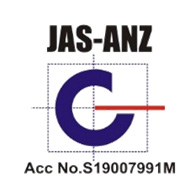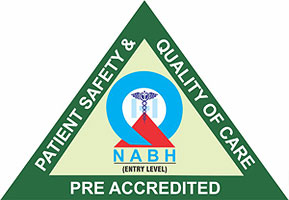+91-7291089674 (Bandra)
+91-7291092120 (Kandivali)




If you plan to opt for laser vision correction (LASIK), then consider choosing SILK. In the world of vision correction, SILK is a super-advanced way to make your vision better. SILK emerges as a cutting-edge and sophisticated procedure, developed by Johnson and Johnson Vision. It uses an advanced laser technology called ELITA to fix common eye problems like myopia (nearsightedness), hyperopia (farsightedness), and astigmatism. Its goal is to quickly and accurately reshape the cornea, so you might not need glasses or contacts anymore.
Read MoreA more advanced form of LASIK surgery called Contoura Vision offers individuals who want to stop wearing eyeglasses better results. With this advanced technique, people who are not eligible for LASIK surgery because of irregularities in the cornea can achieve satisfactory outcomes. Ojas, the best eye hospital in Mumbai, uses cutting-edge laser equipment to correct patients’ vision.
Read MoreIf you feel your eyesight is getting worse either suddenly or gradually, the best thing would be to visit an ophthalmologist (eye doctor).To understand why your eyesight may be deteriorating, we take a closer look at a few reasons.
Read MoreIn the healthcare industry, advanced technologies are developed to make patients’ lives easier and healthier, Thus technological improvements are essential in this sector. Scientists are working hard to develop surgical treatments with the fewest possible risks and the most excellent possible outcomes.
Read MoreIntroductionNowadays there are multiple options of refractive vision corrections available. About 75% of adults use some form of visual aids such as glasses or contact lenses. Every vision correction option has its pros and cons. While deciding what the best choice is for you, there should certain things should consider such as your lifestyle, systemic
Read MoreIntroductionThere are many misconceptions regarding the age criterion for LASIK. The human eye can never be in the same condition throughout life. It changes continuously and eyeball growth can affect your eye powers. Patients who are under the age of 18 are not eligible for LASIK as their eyes need to have complete growth to
Read MoreIntroduction LASIK is an acronym for ‘laser-in-situ keratomileusis’. It is a common and popular surgery for correcting refractive errors. Refractive errors such as nearsightedness, farsightedness or astigmatism can be treated with LASIK. The surgery works by reshaping the cornea using laser technology thereby allowing the light to travel without any obstacle onto the retina that
Read MoreToday, more than 40% of the world’s total population is suffering from myopia or nearsightedness. In addition, many people also suffer from decreased visual acuity. Recent advancements in technology have helped us improve the vision of the majority of the population. Phakic lens implantation is one such procedure which gives freedom from thick glasses. In other words, Phakic lenses are alternatives to contact lenses and LASIK.
Read MoreThe period of motherhood is one of the most beautiful parts of the life of a woman. Women who want to get LASIK eye surgery to get rid of spectacles thinks that this is the best time for this surgery because they have plenty of time in their hand. But, the question that arises here is whether they should go for a LASIK during pregnancy or not. One should not opt for LASIK during pregnancy. Read on to find the answers to some of the questions related to the LASIK surgery before, during, and after the pregnancy.
Read MoreSince the beginning of time, people have been concerned about vision. Glasses and contact lenses were the only options before LASIK emerged. And probably, eyeglasses and contact lenses provided people with temporary improvement in vision. But there was still a need for permanent solution.
Read MoreIn LASIK, a flap is created in the cornea of the eye. Then the corneal flap is gently lifted and excimer layer is used for reshaping the eye. The flap is later put back on, which heals naturally. Once done, the cornea focuses the light accurately on the retina. It helps in creating sharp and clear images leading to perfect vision. LASIK is used for treating vision problems, which include near-sightedness, far-sightedness, and astigmatism.
Read MoreImmediately after the LASIK is performed, you may experience some discomfort in your eyes for a few hours. You might want to involuntarily want to rub your eyes. But you should not, as it may displace the flap from its set position and disturb vision.
Read MoreLASIK is one of the common and popular techniques used for vision correction. LASIK stands for “Laser Assisted-In-Situ-Keratomileusis”, which is one of the effective vision correction surgeries. The technique was introduced in the early 90’s. It is the most popular surgical method used to correct farsightedness, near-sightedness, and astigmatism. LASIK is entirely safe and has high patient satisfaction and success rate.
Read MoreIn recent times, people have been more concerned about having perfect vision without dependence on glasses. Glasses and contacts may get frustrating, even for people over 45 years. Patients would prefer an advanced procedure that helps remove the cataract and eliminate the need for glasses altogether.
Read MoreLike any other surgery, LASIK also has risks and a healing and recovery process. Some patients have a high risk of complications and a slow healing process than a healthy person. Thus, the doctor needs to comprehensively evaluate the eyes and whole body to determine your eligibility.
Read MoreIn short, answer is yes. In this article we will try to elaborate about Cataract surgery and LASIK, so that you can understand how they are separate and interlinked.
Read MoreUsing eyeglasses as corrective measure has come a long way to modern treatment modalities today, ranging from Lasik to Contoura vision. We tend to confuse, when we have multiple options. Lasik, Smile or Contoura vision, which one is good for me?
Read MoreThis is quite common apprehension for any surgical procedure, what if the treatment doesn’t go as the way it was planned. In case of Lasik, what can happen if I move, blink or sneeze during the procedure? To answer all your apprehensions, we came to a thought of writing this article.
Read MoreLASIK and contact lens are the methods for providing a clear vision and a good cosmetic look to the face. However, there is always a discussion about which method is the best. While Lasik is permanent, Contact lens requires daily, or weekly or monthly replacement and both have their own pros and cons.
Read More